GardenerHeaven.com is reader-supported. When you buy through links on our site, we may earn an affiliate commission.
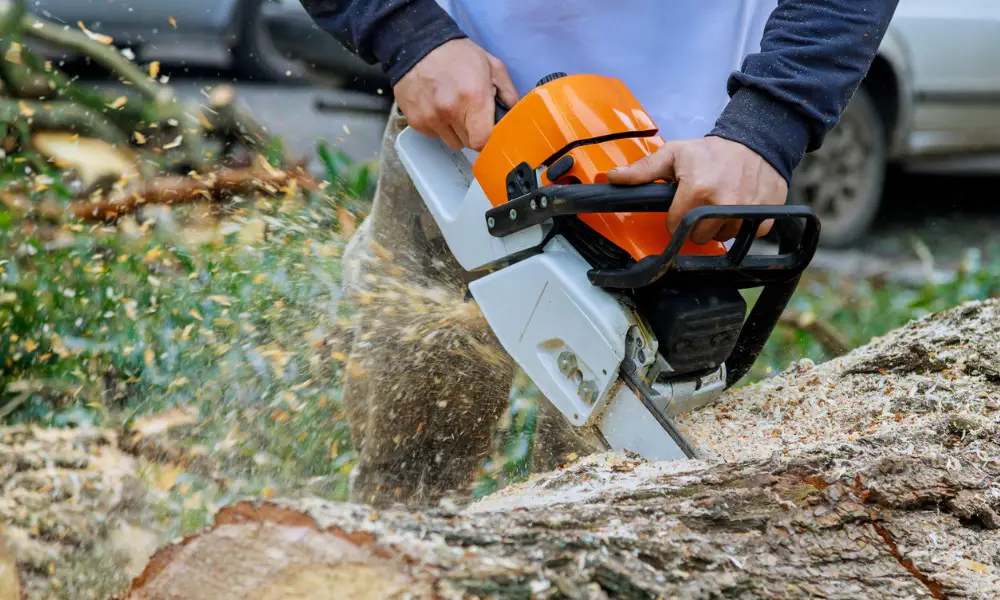
Discover the key to unlocking optimal performance in your chainsaw by understanding and optimizing engine speed. In this section, we’ll explore the importance of engine speed in chainsaw performance and provide an overview of chainsaw RPM. Uncover fascinating insights and expert recommendations to maximize the efficiency and effectiveness of your chainsaw, ensuring you’re equipped with the knowledge to tackle any task with precision and power.
Importance of Engine Speed in Chainsaw Performance
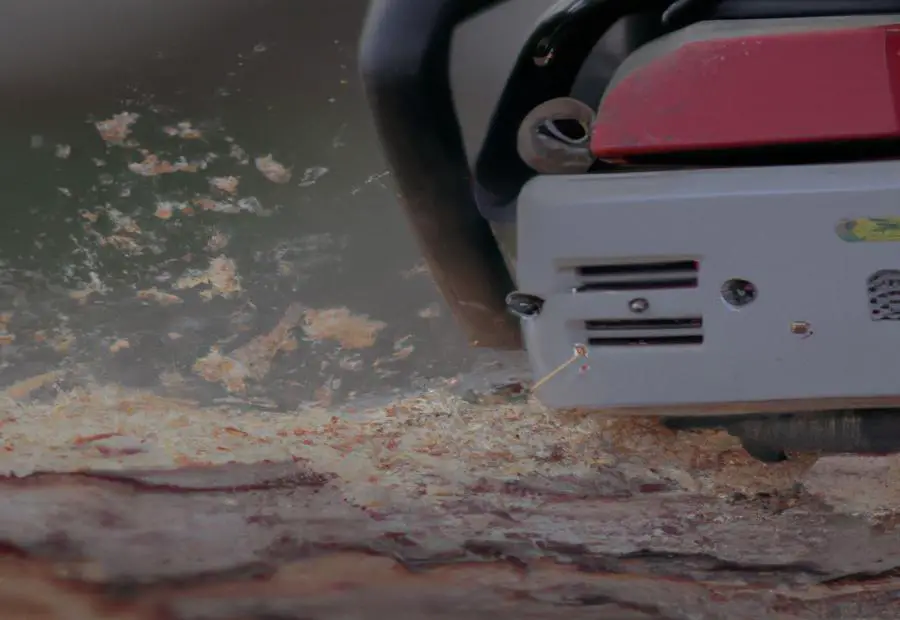
Photo Credits: Gardenerheaven.Com by Larry Smith
Engine speed is a must when it comes to chainsaw performance. It influences the revolutions per minute (RPM) of the chainsaw. The higher the engine speed, the faster the chain spins, leading to better cutting.
But, obtaining the ideal engine speed for a chainsaw needs several factors to be considered. Such as:
- Drive sprocket and chain pitch
- Chain speed and chip removal
- Diameter and rim sprocket
- Bar length
- Full skip chain
- Chain gauge and sprocket tooth count
- Feet per second in first gear
- Tough material
- Spur sprocket
All these factors contribute to the chainsaw RPM and affect the cutting power and efficiency.
It’s essential to acquire the right engine speed for ideal performance. It’s important to balance increasing speed and not compromising on chip removal or causing too much wear. All factors must be considered to find the right engine speed, and the optimal balance for the desired task must be found.
The wrong engine speed could be detrimental to chainsaw performance. When the chainsaw runs at an incorrect RPM, cutting efficiency decreases due to slower chain rotation and inadequate power delivery. This can impact the chainsaw’s ability to cut materials. Additionally, the wrong engine speed can result in increased wear and tear on components, reduced fuel efficiency due to inefficient combustion, and even damage to the engine.
Maintenance and tuning are necessary to optimize engine speed for chainsaw performance. This includes finding the correct sprocket-chain combination based on the task, having the right chain tension for efficient power transfer, sharpening or replacing dull chains, and using the proper fuel-oil mixture for smooth engine operation. By taking these measures, the engine speed can be optimized, resulting in improved chainsaw performance.
Overview of Chainsaw RPM
Chainsaw RPM, or revolutions per minute, is a key performance and efficiency factor. It’s the speed of the engine’s rotation and directly influences cutting power.
Let’s get acquainted with the elements that affect Chainsaw RPM. These include:
- Drive sprocket and chain pitch
- Cutting needs and speed requirements
- Chain speed and chip removal
- Diameter and rim sprocket adjustments
- Bar length and versatile combination options
- Chainsaw bar and full skip chain considerations
- Chain gauge and sprocket tooth count variations
- Feet per second measurement in first gear operation
- Tough material demands
- Spur sprocket adjustments for increased cutting power
These factors all play a role in determining the motor’s RPM. For instance, the drive sprocket size and chain pitch determine the chain’s speed across the bar with every rotation. Different projects will need different rates for the best results.
Optimizing engine speed has lots of benefits:
- It increases cutting efficiency with clean cuts and minimal effort.
- It reduces wear and tear on the saw and its components. Plus, it keeps fuel consumption in sync with performance needs.
On the other hand, incorrect engine speeds can be a problem. Poor RPM can cause slower cuts or inaccurate results. Too high or too low can lead to more wear and tear. Lower efficiency means more fuel is used without improved performance. It can also seriously damage the engine, which means costly repairs or replacements.
To keep engine speed optimized, regular maintenance is key. Clean the air filter, check and adjust spark plugs and fuel filters, and look for worn or loose parts. Pick the right sprocket and chain for the job. Proper chain tension prevents kickback. Sharpen and replace chains often. Use the right fuel and oil mixture recommended by the manufacturer.
Now let’s get revved up and learn all about Chainsaw RPM!
Understanding Chainsaw RPM
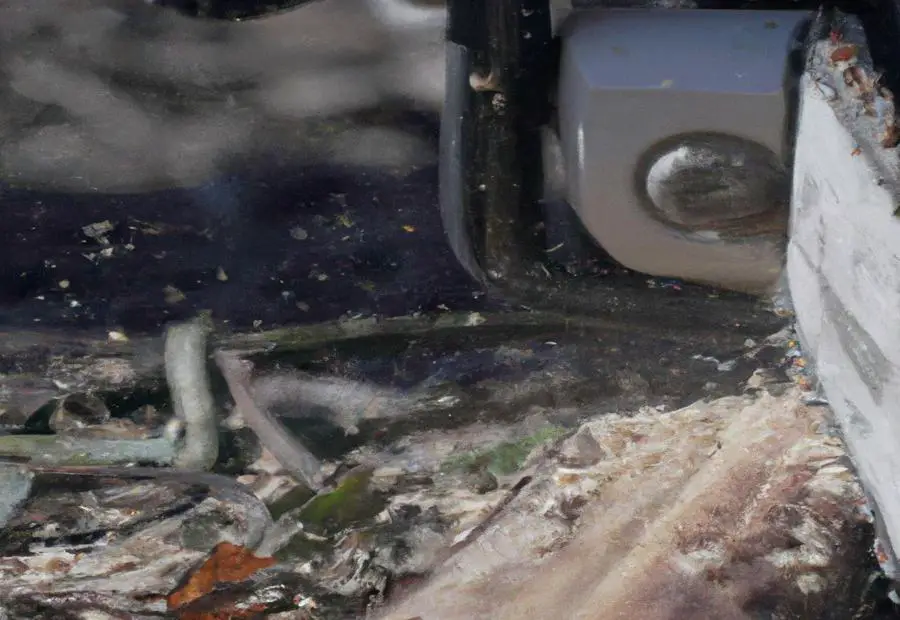
Photo Credits: Gardenerheaven.Com by Jason Taylor
When it comes to optimizing performance, understanding chainsaw RPM is key. In this section, we’ll dive into the importance of chainsaw RPM in cutting efficiency, explore the relationship between chainsaw RPM and engine speed, and define what chainsaw RPM truly means. Stay tuned for valuable insights on maximizing your chainsaw’s engine speed for superior performance and productivity.
Definition of Chainsaw RPM
Chainsaw RPM stands for revolutions per minute – the speed of the engine’s components, such as crankshaft and piston. The higher the RPM, the more power is made.
It is linked to engine speed – controlling the throttle or choke will adjust the RPM.
This is crucial for cutting – chain speed, and cutting performance depends on it.
Factors affecting RPM are drive sprocket, chain pitch, bar length, chain gauge, and sprocket tooth count.
It would be best to determine the optimal engine speed for the best performance.
Using the wrong engine speed can decrease efficiency, cause wear and tear, and cause permanent damage.
Keep your chainsaw in top shape by maintaining it – select the right sprocket and chain, keep proper tension, sharpen or replace chains, and use the correct fuel and oil mix.
Relationship between Chainsaw RPM and Engine Speed
Chainsaw RPM and engine speed have a direct correlation. Engine speed is the number of revolutions per minute (RPM) the engine operates at. Chainsaw RPM is the rotational speed of the chain and bar.
This relationship is key as it affects cutting performance. When engine speed increases, so do chainsaw RPM. This means faster chain movement and improved performance. This leads to quicker chip removal and makes cutting tasks more efficient.
Several factors are to consider, like drive sprocket and chain pitch, rim sprocket diameter, bar length, and gear selection. All these can influence chainsaw RPM. Chain gauge and sprocket tooth count also affect RPM; a thicker chain gauge or a higher number of teeth on the sprocket can reduce RPM.
For optimal performance, engine speed needs to be determined. This requires considering cutting needs, material toughness and desired cutting power. Operating at the optimal engine speed provides many benefits, such as increased cutting efficiency, reduced wear and tear, improved fuel efficiency, and no engine damage.
To optimize chainsaw engine speed, regular maintenance and tuning are necessary. Selecting the right sprocket and chain combination is important. Proper chain tension helps ensure smooth operation. Sharpening or replacing dull or damaged chains regularly will also help.
Using an appropriate fuel and oil mixture is important too. This maintains a proper balance and prevents overheating.
Remember: inspecting the chainsaw for any signs of damage or wear and addressing them promptly can help keep optimal engine speed and ensure its long-term performance.
The dance between RPM and efficiency, where chips fear for their lives – that’s cutting with a chainsaw.
Importance of Chainsaw RPM in Cutting Efficiency
Chainsaw RPM is key to cutting efficiency. The faster the chain rotates, the faster and more effective it can cut. High RPM gives faster cutting; low RPM slows it down.
The engine speed of the chainsaw directly influences RPM. This is important to understand for peak performance.
Drive sprocket, chain pitch, bar length, chain gauge, and sprocket tooth count affect RPM and cutting efficiency. Consider their compatibility for optimal engine speed.
Keeping the ideal engine speed is critical for better cutting speed and precision. Incorrect RPM slows down cutting and wears out parts. It also reduces fuel efficiency and can damage the chainsaw.
Regular maintenance and tuning, correct sprocket and chain, proper tension, sharpening or replacing chains, and correct fuel/oil mixture are all needed to optimize engine speed and get peak performance from a chainsaw.
Factors Affecting Chainsaw RPM
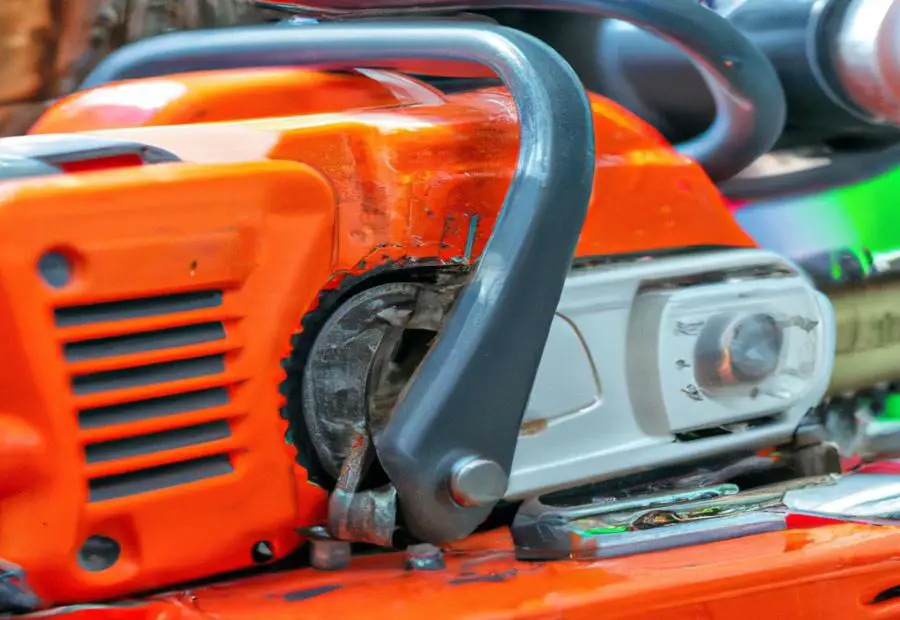
Photo Credits: Gardenerheaven.Com by Roy Torres
Understanding the factors that impact chainsaw RPM is crucial for optimizing engine speed and maximizing performance. This section will dive into various aspects that affect chainsaw RPM, such as drive sprockets, chain pitch, cutting needs, chain speed, bar length, bar types, Gauge, sprocket tooth count, gear ratios, material toughness, and cutting power. By exploring these factors, we can gain valuable insights into how to fine-tune chainsaw RPM for enhanced efficiency and cutting effectiveness.
Drive Sprocket and Chain Pitch
The drive sprocket and chain pitch are key for a chainsaw’s performance. The drive sprocket sends power from the engine to the chain. Chain pitch is the distance between each link. These influence cutting efficiency and the chainsaw’s overall performance.
To comprehend their roles, let’s look closer. The drive sprocket is at the front of the chainsaw. It has teeth that engage the chain links. As the engine speeds up, the drive sprocket rotates the chain more.
Chain pitch is how close or far apart the links are. A smaller angle means more links in length, making for a higher cutting speed. A larger pitch has fewer links, so cutting speed decreases, but cutting power increases.
By picking the right combination, users can customize their chainsaw. A small pitch and drive sprocket are ideal for light materials or small branches. For bigger materials, opt for the larger rise and matching drive sprocket.
Understanding how the drive sprocket and chain pitch work together is essential. Choosing the right combination can maximize efficiency and reduce wear and tear.
Manufacturers have improved the design and material of these components over time. This has enabled users to be more productive and accurate with cutting tasks.
Drive sprocket and chain pitch are necessary to cut things faster.
Cutting Needs and Increase Speed
Cutting needs and speed are important when using a chainsaw. Knowing the relation between these two can optimize performance. Factors that affect them include drive sprocket and chain pitch, chain speed and chip removal, bar length, chain gauge, and sprocket tooth count.
To get the best results, do the following:
- Select the correct drive sprocket-chain combination. Different combos give different speeds and power.
- Tighten the chain properly. This ensures smooth cutting.
- Sharpen or change the chain regularly. Dull or worn-out chains lead to poor cutting.
- Use the correct fuel-oil mix. The wrong blend affects engine performance and cutting.
By taking these into account and performing maintenance, one can increase the speed for more cutting needs without bad quality or risk of damage. Other details are not included here. It is important to know how these factors affect chainsaw operations. For example, a professional logger could quickly finish a tough job using a high-speed chainsaw with the right sprocket-chain combination. This showed the importance of correctly assessing cutting needs and using the appropriate equipment.
Chain Speed and Chip Removal
Chain speed is the rate the chainsaw chain rotates. It’s important for efficient wood chip removal when cutting. The faster the chain speed, the smoother and quicker the cut.
Effect on RPM:
Factors like drive sprocket and chain pitch, need for speed, diameter and rim sprocket, bar length and combo, chainsaw bar, and full skip chain, chain gauge and sprocket tooth count, feet/second and first gear, tough material and spur sprocket, and decreasing diameter all affect chainsaw RPM.
Optimizing these factors to get the best engine speed for performance gives the best cutting efficiency. The chain speed should be right to remove chips properly without strain or wear.
Wrong engine speeds have bad effects. Cutting efficiency could go down, and components may wear. Fuel efficiency goes down, and engine damage can happen.
To optimize engine speed:
- Regular maintenance and tuning are essential.
- Choose the right sprocket and chain combo based on cutting needs.
- Maintain proper chain tension.
- Sharpen or replace worn-out chains.
- Use the correct fuel-to-oil mixture.
Go big for chainsaw power – increase the diameter and rim sprocket!
Increase The Diameter and Rim Sprocket
Boosting the rim sprocket diameter greatly affects a chainsaw’s performance. To improve it, upgrade to a larger rim sprocket. This means higher engine speed and more chain RPM.
Follow these steps to increase the diameter and rim sprocket:
- Select the right size based on your cutting needs and desired speed boost. This will give you a higher RPM and faster chain speed.
- Replace the old one with the new bigger one. This may require disassembling parts of the chainsaw, so read the manual or get help if needed.
- Adjust the chain tension for proper operation and less wear and tear.
This change boosts cutting efficiency and productivity while taking it easy on the engine and operator. Other components, such as drive sprockets or bar length, may need adjustment too. Consult an expert for advice for optimal performance. Regular maintenance and tuning are key to maximizing performance with a larger rim sprocket size.
Find the right bar length and combination for a chainsaw that cuts through lumber like a cat.
Bar Length and Versatile Combination
The length of the guide bar affects the maneuverability and cutting capacity of the chainsaw. A longer guide bar is great for larger jobs or thick materials. It also allows for deeper cuts. On the other hand, a shorter bar provides better control. This is good for small tasks or precision cutting.
The versatile combination refers to the compatibility between different chain types and the specific needs of a cutting task. Other chains have varying characteristics, such as tooth angles and designs. Selecting an appropriate combination allows users to optimize their chainsaw’s performance.
Using an inappropriate combination can lead to decreased cutting efficiency, increased wear, reduced fuel efficiency, and potential damage to the engine.
Chainsaw Bar and Full Skip Chain
The chainsaw bar and full skip chain are must-haves for any chainsaw. They boost performance and cutting efficiency.
The bar, the guide on which the chain is mounted, holds the chain steady.
The full skip chain is a special type of chain setup; it affects how the saw works.
To understand the importance of these components, we must consider factors that influence the saw’s performance—such as the drive sprocket and chain pitch, what you’re cutting, and increased speed.
Plus, chain speed and chip removal, diameter and rim sprocket, bar length and versatile combo, chain gauge, sprocket tooth count, feet per second, first gear, and tough material and spur sprocket.
These all help the saw to work best.
The bar and chain together have a major impact on performance. Different bar lengths give various advantages, depending on the task.
Picking the right chain gauge for the job increases performance even more.
A full skip chain is great for faster cutting. It reduces drag, leading to speedier chip removal.
Standard chain configs offer more control but slower cutting speeds.
In sum, the chainsaw bar and full skip chain are central pieces. They drastically affect performance and cutting efficiency.
Think about the chain gauge, sprocket tooth count, and bar length.
Also, use a full skip chain when it’s needed. This will greatly enhance the functionality and effectiveness of the chainsaw.
Chain Gauge and Sprocket Tooth Count
Chain Gauge and Sprocket Tooth Count are key to a successful chainsaw chain. The chain Gauge is the thickness of the drive links. Sprocket Tooth Count is the number of teeth on the saw’s sprocket.
You have the right Chain Gauge for your saw’s bar and sprocket. Wrong Gauge causes too much friction, cutting power is reduced, and damage may occur. Chainsaws are designed with specific Gauges – 0.050″, 0.058″, or 0.063″.
Also, Sprocket Tooth Count decides the speed of the chain on the bar. Different applications need different rates. So, the right Tooth Count is essential for efficient cutting.
Besides Chain Gauge and Sprocket Tooth Count, other elements like drive sprockets, bar length, and chain pitch also decide chainsaw performance. Balance is necessary to get the desired cutting efficiency and power.
You can get the best performance from your chainsaw by picking the right Chain Gauge and Tooth Count for your cutting needs, plus proper tension and chain sharpening. Remember, slow and steady wins the race.
Feet Per Second and First Gear
Grasping the correlation between feet per second and first gear is essential for improving chainsaw functioning. Regarding RPM, the chain speed (measured in feet per second) significantly affects cutting efficacy.
To make this relationship clearer, consider the following table:
| Engine Speed (RPM) | Chain Speed (feet per second) |
|---|---|
| 7000 | 86 |
| 8000 | 98 |
| 9000 | 110 |
| 10000 | 122 |
Raising the engine speed leads to an increased chain speed, which means faster cutting. Nonetheless, the ideal balance between engine and chain speed should be located to guarantee proficient cutting without overworking the chainsaw.
Apart from determining the correct rpm range for optimal operation, other elements such as drive sprocket size, chain pitch, and bar length also affect the suitable engine speed for various cutting requirements. Each combination will have varied effects on chain speed and overall cutting power.
Consequently, cautiously examining these components alongside engine speed is a must when dealing with feet per second and first gear in chainsaw performance. By understanding this association and making informed decisions regarding gearing configurations, users can attain maximum cutting efficiency while limiting strain on their equipment.
Tough Material and Spur Sprocket
Uncovering the significance of tough material and spur sprockets in chainsaw RPM is worthwhile. Here, a table summarizes their impact on performance:
| Tough Material and Spur Sprocket | Characteristics |
|---|---|
| Increased cutting power | Spur sprockets offer torque to cut tough materials efficiently. |
| Improved durability | Tough materials demand robust components. A strong spur sprocket ensures prolonged usage. |
| Enhanced stability | Stability is key for precise cuts. A designed sprocket helps maintain steady chain motion. |
Tough material and sprocket spur contribute to cutting power and durability. They also aid stability, resulting in efficient precision.
Historically, older chainsaws lacked mechanisms to handle tough materials. Advanced spur sprockets revolutionized chainsaw performance. This marked a major point in chainsaw technology history, enabling improved efficiency and consistency.
To optimize engine speed with tough materials, it’s important to understand how tough materials and sprocket spurs affect chainsaw performance. This ensures enhanced cutting power, durability, and stability.
Decrease The Diameter and Increase Cutting Power
Decreasing the diameter of the chainsaw bar can boost cutting power. Shrinking the size of the bar allows the chainsaw to cut more material with each pass. Here is a guide on how to do it:
- Select a smaller bar than the one you have.
- Detach the existing bar from the chainsaw body following the manufacturer’s instructions.
- Attach the smaller bar securely, making sure it is aligned and tight.
- Adjust the chain tension around the rim sprocket and drive sprocket.
- Test the cutting power. Adjust if needed.
- Maintain your chainsaw, including sharpening or replacing the chain.
This technique might need some tweaking to get optimal results. Don’t forget to maintain the chainsaw for the best performance with a smaller bar. For the best output, find the sweet spot with the engine speed.
Optimal Engine Speed for Performance
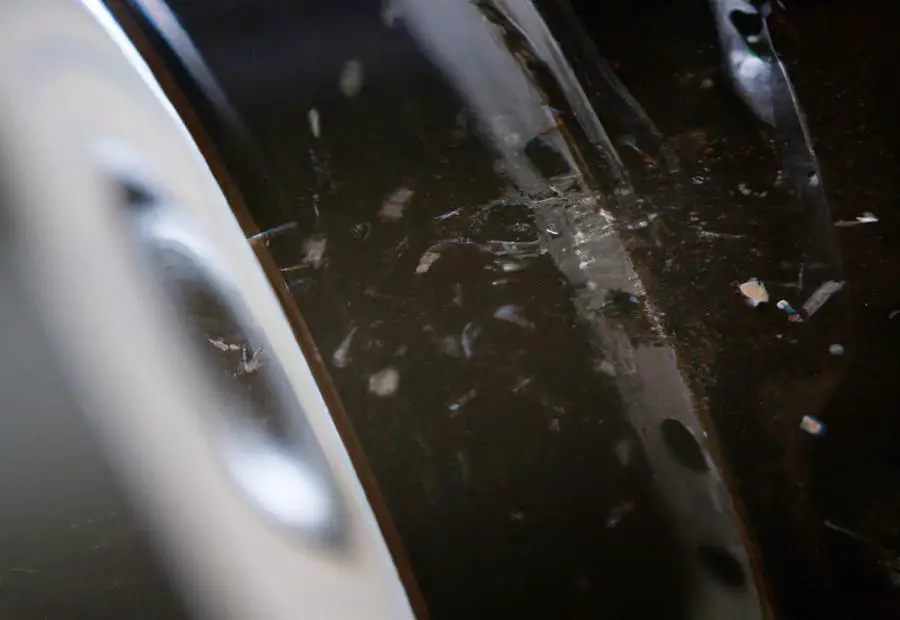
Photo Credits: Gardenerheaven.Com by Alexander Anderson
The optimal engine speed is crucial when it comes to performance. This section uncovers ways to determine the ideal engine speed and explores the benefits of operating at that speed. Through factual evidence, we’ll delve into the significance of finding the sweet spot for engine performance backed by reliable sources.
Determining the Optimal Engine Speed
Finding the perfect engine speed for a chainsaw is key to ideal performance. RPM (revolutions per minute) is important for a chainsaw’s cutting efficiency and overall success. Users can enhance their chainsaw’s performance by understanding the factors that affect the RPM and the advantages of operating at the right engine speed.
Multiple factors must be considered to determine the right engine speed for a chainsaw. These are listed in the table below:
| Factors Affecting Chainsaw RPM |
|---|
| Drive Sprocket and Chain Pitch |
| Cutting Needs and Increase Speed |
| Chain Speed and Chip Removal |
| Increase The Diameter and Rim Sprocket |
| Bar Length and Versatile Combination |
| Chainsaw Bar and Full Skip Chain |
| Chain Gauge and Sprocket Tooth Count |
| Feet Per Second and First Gear |
| Tough Material and Spur Sprocket |
| Decrease The Diameter and Increase Cutting Power |
A chainsaw’s drive sprocket and chain pitch are important for the RPM. Different mixes of these two can change how fast the chain moves, influencing the cutting efficiency. Also, considering the cutting needs and increasing speed is necessary to achieve the optimal engine speed. Adjusting the chain speed can help remove chips more easily, resulting in neater cuts.
Making the diameter of the rim sprocket larger has its advantages, as it lets the chain move faster. Similarly, the length of the bar combined with different combinations can affect the engine speed, allowing for more options in various cutting cases. Choosing between a full skip or standard chain can also shift the RPM.
The thickness of the drive links and the number of teeth on the sprocket are essential for finding the optimal engine speed. Plus, measuring speed in feet per second and using the proper gear, particularly the first gear, can optimize the performance.
The type of material being cut also matters when determining the optimal engine speed. Harder materials may need a spur sprocket for more power delivery. On the other hand, decreasing the diameter of the chainsaw can increase the cutting power.
By considering all these factors and understanding their impact on the chainsaw RPM, users can decide the optimal engine speed for their needs. Operating at this best speed can offer many benefits, such as higher cutting efficiency, less wear and tear on the chainsaw, improved fuel efficiency, and less risk of engine damage.
Operating at the top engine speed is like a chainsaw ballet, slicing through wood with accuracy and elegance.
Benefits of Operating at Optimal Engine Speed
Operating a chainsaw at its optimal engine speed has numerous benefits. It boosts cutting efficiency, saving time and effort. Plus, fuel efficiency increases while engine damage is minimized.
Moreover, consistent performance is promoted, with a balanced power output that decreases fatigue and maximizes safety.
But note that peak chainsaw performance requires more than just the right engine speed. Regular maintenance, proper chain tensioning, correct fuel mixture, and suitable sprocket-chain combinations play essential roles.
Fail to heed these rules? Get ready for a chainsaw massacre of inefficiency!
Effects of Incorrect Engine Speed
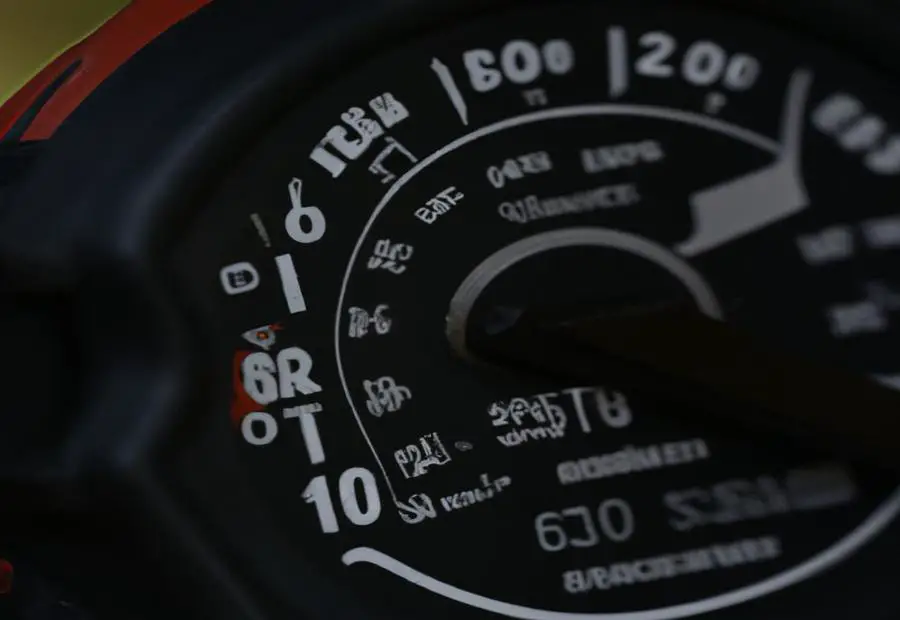
Photo Credits: Gardenerheaven.Com by Brandon Hill
Incorrect engine speed can harm the performance and longevity of your chainsaw. This section will explore the consequences of running a chainsaw at the wrong engine speed. From decreased cutting efficiency to increased wear and tear, along with reduced fuel efficiency and the potential for engine damage, finding the optimal engine speed is crucial for achieving smooth operation and maximizing the lifespan of your chainsaw.
Decreased Cutting Efficiency
The incorrect engine speed may cause decreased cutting efficiency. It can make the chain dull and ineffective, resulting in lower cutting speed and decreased cutting efficiency.
Also, it increases wear and tear on the chainsaw. Fuel efficiency is also reduced with lower cutting efficiency. Moreover, this increases the potential for engine damage.
Furthermore, decreased cutting efficiency increases the risk of accidents or injuries. Therefore, it’s important to maintain an optimal engine speed for cutting efficiency to maximize performance and extend the lifespan of the chainsaw.
A way to improve decreased cutting efficiency is to:
- Regularly maintain and tune the chainsaw.
- Select the right sprocket and chain combination.
- Ensure proper chain tension.
- Sharpen and replace the chain regularly.
- Lastly, use the correct fuel and oil mixture.
Increased Wear and Tear
Increased wear and tear happens when more friction, strain, and stress are put on the chainsaw parts. This occurs when the engine speed increases, leading to greater power and wear on various components. The chain, drive sprocket, and bar experience more strain and friction, which causes faster wearing of the chain teeth. The drive sprocket may also wear out quicker.
More stress on the engine can reduce its life and cause malfunctions. The cutting bar can bend or warp due to greater pressure and wear. Using a chainsaw at too high an engine speed for long periods will increase wear and tear. Maintenance and inspections help minimize this. Proper lubrication, keeping chain tension within limits, and replacing worn-out parts quickly can help.
Optimize engine speed – save money and fuel!
Reduced Fuel Efficiency
Various factors can impact the fuel efficiency of a chainsaw. One such factor is engine speed. It is crucial for performance and can help improve fuel efficiency. If the engine speed is too low, the chainsaw may struggle. This can lead to higher fuel demand. If the engine speed is too high, it can cause excessive fuel consumption.
Chain tension can also affect fuel efficiency. If the chain is not tensioned properly, it may drag and cause friction. This can lead to increased fuel consumption. Regular maintenance and tuning can help ensure optimal tension and reduce wastage.
An appropriate sprocket and chain combination can also help with improved fuel efficiency. The right combo allows for smoother operation with minimal resistance, reducing strain on the engine and cutting components. This reduces overall fuel consumption.
To improve fuel efficiency, maintain an optimal engine speed, and ensure proper chain tension. Additionally, select suitable sprocket and chain combinations. With these aspects and adequate maintenance, operators can minimize fuel use while maximizing cutting performance.
Potential Engine Damage
Chainsaw engine damage can happen when the RPM is incorrect. The link between chainsaw RPM and engine speed is critical for good performance and preventing potential injury.
Excessive engine speed can cause overheating, warping, or cracking. This could lead to costly repairs or even needing a new engine. Too low RPMs lead to incomplete combustion, more carbon inside, and less efficiency.
Using high RPMs for too long can strain bearings and other parts, causing early wear and failure. Plus, incorrect engine speeds stimulate more vibration and fasten wear.
Maintenance and tuning help protect the engine. Follow the manufacturer’s oil, filter, spark plug, and fuel system maintenance recommendations.
An example: An incorrect fuel-to-oil ratio leads to no lubrication. This causes increased friction, heat, and piston seizure. Ignoring proper procedures and not having the right RPMs can cause major engine damage.
Know the relationship between chainsaw RPM and engine speed to keep performance up and avoid problems like low cutting efficiency, more wear and tear, and engine damage. Keep your chainsaw engine running smoothly with these speed optimization tips!
Tips for Optimizing Chainsaw Engine Speed
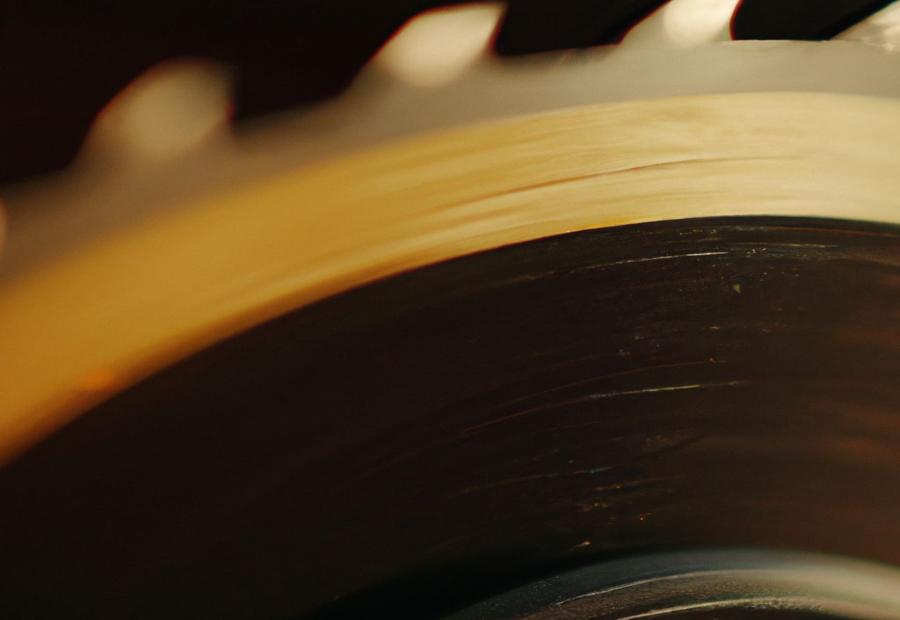
Photo Credits: Gardenerheaven.Com by Timothy Rodriguez
Optimizing your chainsaw engine speed is crucial for achieving peak performance. In this section, we’ll explore valuable tips that can help you maximize the efficiency and effectiveness of your chainsaw. From regular maintenance and tuning to selecting the right sprocket and chain combination, we’ll cover all aspects of optimizing engine speed. Proper chain tension, sharpening, and replacing chains regularly, as well as using the correct fuel and oil mixture, will also be highlighted. Prepare to enhance your chainsaw’s performance and productivity.
Regular Maintenance and Tuning
Regular maintenance and tuning of a chainsaw are essential for optimal performance and long life. It can prevent engine issues, increase cutting efficiency, and extend the chainsaw’s life. Do it right with these five steps:
- Clean the air filter. This keeps airflow and prevents dust and debris from clogging the engine—result: better fuel efficiency and less risk of engine damage.
- Check the spark plug. Inspect it to make sure it’s clean and in good condition. Otherwise, it’ll cause poor ignition, decreased power, and increased fuel consumption. Clean or replace according to the manufacturer’s instructions.
- Adjust the carburetor. This controls the fuel-air mix that runs the chainsaw. Check and adjust regularly for optimum performance. Poor settings can lead to misfires, less efficient cutting, and bad operation.
- Lubricate the chain and guide bar. This reduces friction, prevents wear, speeds cutting, and helps the components last longer. Do this regularly with the right oil as per the manufacturer’s instructions.
- Inspect the drive sprocket teeth. This transfers power from the engine to the chain. Inspecting its teeth shows any wear or damage that could affect performance or safety during use. Replace worn or damaged teeth.
By following these steps, you can maintain your chainsaw in top condition. Maximum performance, safety, and durability are guaranteed. Additional maintenance tasks include checking and tightening bolts, cleaning the chain brake, and inspecting the fuel system. Refer to the manufacturer’s instructions for detailed maintenance requirements. Enjoy improved cutting efficiency, reduced fuel consumption, and a reliable tool.
Selecting the Right Sprocket and Chain Combination
Choosing the proper sprocket and chain combo is essential for optimizing chainsaw performance. It impacts the RPM, which affects cutting efficiency and performance.
- Drive Sprocket and Chain Pitch: This choice impacts the speed of the chainsaw. Different combos offer varying RPMs for desired cutting results.
- Cutting Needs and Speed: Selecting the right combo for specific cutting needs can boost performance.
- Chain Speed and Chip Removal: Chainsaw RPM affects chain speed and chip removal. By choosing the right combo, optimal chip removal during cutting can be ensured.
- Increase The Diameter and Rim Sprocket: Bigger diameter guide bar and suitable rim sprocket will increase the chainsaw’s power for tougher tasks.
- Bar Length and Versatile Combination: The right bar length and versatile combo allow flexibility and optimal engine speed.
Also, full skip chains have wider spacing between teeth, reducing friction and allowing for higher RPMs. Manufacturers have developed options based on changing industry needs to ensure durability and reliability.
By considering drive sprockets, chain pitch, cutting needs, chain speed, bar length, and unique features, operators can select the ideal combo to maximize their chainsaw’s RPM and peak performance.
Don’t forget to check the tension of your chainsaw, or you’ll be in for a lumberjack’s nightmare!
Proper Chain Tension
To get the right chain tension, follow these four steps:
- Adjusting: Turn off your chainsaw and let it cool. Find the tensioning mechanism, usually on the side of the bar. Use a wrench or screwdriver to loosen the screws and adjust. Don’t make it too tight or too loose.
- Testing: Pull on the chain to check there is some slack but not too much. It should move easily with little resistance.
- Checking Guide Bar: Look at the guide bar for signs of damage, like bent rails or elongated holes. If there is, replace the bar.
- Retest + Retighten: Start your chainsaw and run it at idle. Then rev it up at full throttle and watch for vibrations or sagging. Readjust if needed.
Regularly lubricate, sharpen, and check for damaged or worn-out links.
A good chain tension boosts cutting efficiency and protects you and your chainsaw. Keep your chains sharp and be ready to replace them for the best performance.
Sharpening and Replacing Chains Regularly
Sharpening and replacing chains is key for a peak-performing chainsaw engine. Well-maintained chains provide efficient cutting, less wear and tear, better fuel efficiency, and prevent potential engine damage. Here is a 4-step guide:
- Step 1 – Inspect: Regularly check the chain for signs of wear or damage. Dull teeth, bent links, or excessive wear on the cutting edge? Replace if needed.
- Step 2 – Sharpen: Use the correct sharpening tool on the teeth of the chain. Keep the right angle for optimum cutting. Follow the manufacturer’s instructions or seek professional guidance.
- Step 3 – Chain Tension: Proper chain tensioning is key for efficient cutting. Adjust the tension per the manufacturer’s guidelines – not loose or tight.
- Step 4 – Replace: No matter how well maintained, the chain will wear down and must be replaced. Match the new chain to your chainsaw model and specifications.
Also, use high-quality fuel and oil mixture specifically designed for chainsaws to improve performance and reduce strain.
Maintaining and sharpening/replacing chains regularly optimizes performance and extends their lifespan, ensuring safe operation, increased productivity, and reduced downtime.
Remember, engine speed influences chainsaw performance; understanding and optimizing it is essential for the best results. The correct engine speed increases cutting efficiency, reduces wear and tear, improves fuel efficiency, and prevents potential engine damage.
Using the Correct Fuel and Oil Mixture
Mixing the correct fuel and oil is key for optimal chainsaw performance and longevity. This mixture affects engine smoothness, lubrication, and cutting efficiency. If the wrong mix is used, it could lead to poor performance, more wear & tear, reduced fuel efficiency, and even engine damage. Here is a 5-step guide to ensure you use the right fuel & oil mixture:
- Check the manufacturer’s instructions or user manual to determine your model’s required fuel mix ratio.
- Use high-quality two-stroke engine oil designed for chainsaws.
- Measure and mix oil & gasoline accurately using a measuring jug.
- Mix thoroughly in a clean container.
- Use fresh fuel mix & avoid storing mixed fuel for long periods.
Lastly, always follow the specific instructions provided by your chainsaw manufacturer. The right fuel & oil mix reduces friction, prevents carbon buildup, ensures efficient combustion, and maximizes fuel economy. Follow these guidelines to protect your chainsaw and optimize its engine speed & performance.
Conclusion
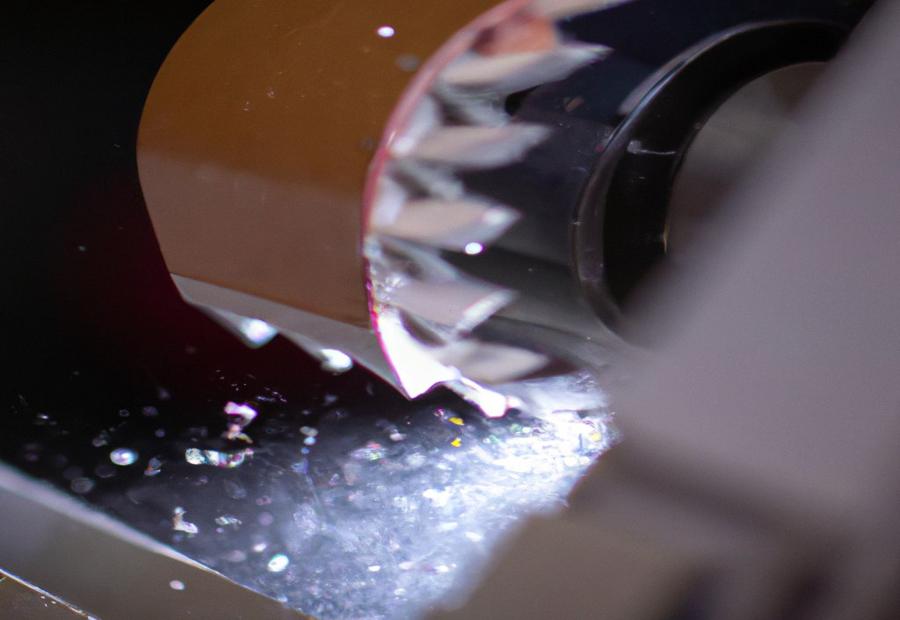
Photo Credits: Gardenerheaven.Com by Jordan Lopez
So, we wrap up! Knowing and improving the RPM of a chainsaw motor is vital for the best performance. We must balance engine power and chain speed. To maximize efficiency, upkeep, and the right fuel mix are necessary. This’ll extend the chainsaw’s life and reduce engine risk.
Some Facts About Chainsaw RPM: Understanding and Optimizing Engine Speed for Performance:
- ✅ The best sprocket tooth count for a chainsaw is usually the default tooth count that came with the saw from the factory. (Source: Team Research)
- ✅ Gearing can be done on both spur and rim type sprockets, but it is easier on a rim sprocket. (Source: Team Research)
- ✅ Increasing the drive sprocket’s diameter by one step up in tooth count increases the outer speed of the sprocket and chain speed, which is useful for cutting softwood like pine. (Source: Team Research)
- ✅ Decreasing the drive sprocket’s diameter by one step down in tooth count increases the applied power on the chain, making it suitable for cutting hardwood or using a longer bar. (Source: Team Research)
- ✅ Proper sizing of components, including bar length and chain gauge, is necessary to minimize wear and the risk of chain derailment or injury when changing the sprocket tooth count. (Source: Team Research)
FAQs about Chainsaw Rpm: Understanding And Optimizing Engine Speed For Performance
Question 1: What is the default tooth count for a chainsaw’s sprocket?
Answer: The best sprocket tooth count for a chainsaw is usually the default tooth count that comes with the saw from the factory unless there are specific cutting needs.
Question 2: Can the number of teeth on the drive sprocket be changed?
Answer: Yes, the number of teeth on the drive sprocket can be changed on both spur and rim-type sprockets, but it is easier to do on a rim sprocket.
Question 3: How can the chain speed be calculated with different tooth counts?
Answer: You can calculate the chain speed in feet per second using the formula (((Chain pitch x 2) x number of teeth) x RPM) / 12.
Question 4: How can I increase the speed of my chainsaw?
Answer: If you desire more speed, such as cutting softwood like pine, you can increase the drive sprocket’s diameter by one step up in tooth count. This increases the outer rate of the sprocket and the chain speed. However, factors like chain gauge and bar length may need to be considered.
Question 5: How can I increase the torque of my chainsaw?
Answer: To increase torque, especially for cutting hardwood or using a longer bar, you can decrease the drive sprocket’s diameter by one step down in tooth count. This increases the applied power on the chain. When changing the sprocket, considering the entire cutting group, including bar length and chain gauge, is important.
Question 6: Are any risks associated with modifying a chainsaw’s sprocket?
Answer: Yes, modifying a chainsaw has risks and should only be done by experienced individuals. Changing the sprocket tooth count can increase wear on the chainsaw and change the tolerances between the bar and chain. Proper sizing of components is necessary to minimize wear and the risk of chain derailment or injury. Consulting with a professional is recommended for specific recommendations.




